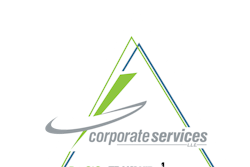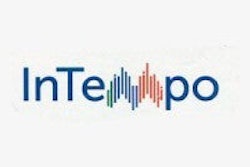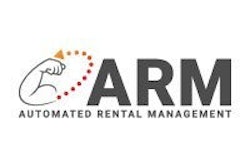Choosing a management software program is a little like getting married. Most people make their choice based on a number of personal factors, and then they stick with it. But what if you made a choice and several years later, it just doesn't feel right anymore? Would you look elsewhere for satisfaction, or would you try to make do with what you have?
"Research suggests that the average lifespan of a business management system is approximately seven years," says Clark Haley with BCS ProSoft. For some, it's at this point that they begin to look around at what other providers might have to offer.
Irreconciable differences
J.J. Shea at Solutions by Computer notes that barring some serious deficiency in the software, system owners generally stick with their software supplier and keep upgrading to newer releases unless they have some need that the software can’t handle now or in the near future. "The need could relate to functionality, limitations of scale, or the need to take better advantage of general business tools such as emailing, faxing, credit card processing, etc."
Sometimes it's the system's inability to change that's at the root of one's desire to look elsewhere. "Software doesn’t wear out or become obsolete; it will generally always do what it initially did," Shea says. "But it may not adapt to new requirements of the business, such as providing the rental customer with the capability of viewing information about their account online. And if a software supplier has gone out of business or isn’t providing adequate support to customers, change is called for – and the sooner the better, before a serious issue arises."
Starting over with another
So, you've ended it with your previous software supplier. Now what? How do you begin to rebuild? According to Michael Saint with Corporate Services, the process begins with assembling a team to determine the new target goals, develop new processes and build "cheatsheets." It then ends with training and ultimately concludes with testing, testing and more testing.
In the middle of all this, the meat of the process requires what's typically referred to as “mapping” the data, but it's usually far more complex. "Mapping implies that there exists matching data 'buckets' in both systems. In actuality, the systems rarely match up and therefore it's necessary to calculate or extrapolate data from one system to another," he explains. "Other considerations are the quality of data available from the source system, the desire to re-organize data and the technology used to store data in the older system."
He continues, "It really amounts to restructuring the old source data to the current needs of the client. The most important concept is testing. Scripts should be constructed to move the data and then extensive testing should confirm that the resulting data has integrity within the new system."
Shea at SBC agrees, noting that the ultimate goal is always to see an improvement in functionality. "Conversion technologies are always evolving, but no matter what method is used, the data from the existing system must be converted to the new system in a way that functions properly with the new software rules," he says. "It’s essential for the software supplier and the rental operator to have a mutual understanding of how both systems function, or even the most automated conversion process can become compromised. The goal at the end of the conversion is for the data to be manipulated by the new system in a way that is as valuable, or more valuable, than was possible in the prior system."
Making it work
Often, it isn't necessary to go with a completely different provider to get the increased functionality you need from your software system. Sometimes, it just takes an upgrade. Still, the process can seem daunting because it requires tinkering with what's familiar and there's always the potential for things to go wrong. These concerns are largely unwarranted.
"With a software version upgrade, the process is usually seamless and involves an automated installation of the new release," says Shea. "The rental owner’s responsibility is to make sure that a complete, verified backup of the data exists as a safety net before starting the installation."
Still, there's always a learning curve. "The process for an upgrade generally requires some training on the new features," says Haley. "Some customers ask us to help with the installation of the software, data conversion, report and form adjustments, etc."
Saint says in Corporate Services' software, “legacy code” is written to update the data to accommodate the upgrade. "Most clients will perform several upgrades annually to avoid falling too far behind the current production version. If a significant period occurs between upgrades, then some consulting may be required to assist the client as they take advantage of new capabilities," he says. "In some cases clients have waited so long for the upgrade that existing hardware and operating system upgrades are recommended.”
What if there are problems?
As with anything new, there's also a "breaking in" period with management software conversions. During that time, it's common to experience a few ups and downs. And it takes work.
According to Shea, the best advice a rental company can follow when switching software brands is to embrace the possibilities of the new system. "No two systems are identical, and there will always be a change from the old ways of doing things. What may appear to be a loss of a particular function may in fact be a better approach to that function in the new system, just accessed from a different place or displayed differently to the user."
He continues, "The best way to combat unfamiliarity with new software is to commit to full training. It doesn’t make sense for users to forego training because they were proficient on the former system. In fact, that approach almost always leads to frustration because users are always looking for the old comfort zone. A self-taught learning curve takes time and costs the business money, whereas training up front leads to full use of the system in the shortest period of time."
Shea says another way to minimize glitches in a conversion is to run parallel with both systems for a limited period of time. "We usually recommend up to a week. That should be sufficient for the business to ease from one software package to the other and train all the users. Rental owners should remain sensitive to the fact that while they may feel confident about the new system, employees need to be nurtured through the process."
And finally, when upgrading, it’s possible to run into hardware compatibility issues, particularly with old servers that have old peripheral devices. A thorough analysis in advance can identify any devices that will need to be upgraded in tandem with the software, Shea says.
To ensure a smooth conversion, Saint recommends forming a core team of people from inside and outside the organization to plan and execute the upgrade. Next, ensure that all departments are represented and their input is considered, and then make sure at least one member of the team has experience and realistic expectations for the upgrade (hire a consultant if you have to).
"Allow enough time," Saint says. "Today, no company has excess capacity. Employees are already working long hours and few companies can devote a lot of time to any project. If employee resources are extremely limited, consider hiring some temporary employees to allow your core team members the freedom to properly participate in the project."
Saint then suggests creating a full “test” environment to fully investigate all features and data. The failure to test produces the most emergencies after going live. Next, schedule extensive training and build cheat sheets for each job description. "Ensure each user has access to the training and testing environment and is allowed adequate time to prepare," Saint says.
"Schedule a test to go live one month before the true 'go live' date. Do not let the employees know that it is a test. This way you will uncover shortcomings in data conversions, training and configurations. This will give you a month to correct the shortcomings prior to the true 'go live' date," he says.
Everyone wants security
Despite all your best efforts, switching to a new system can put you in a vulnerable position. Because of this, it's vital that you do all you can to protect your data. "Data is king and it is imperative that a customer properly backup the data before performing any updates or upgrades," says Haley. "From a security standpoint, backups must be kept off site in a secure location."
Saint says access to the testing environment should be restricted to the "core team" until adequate restrictions have been created. "Restriction profiles should match job descriptions to ensure each employee has permission to do what they need, but not more than is needed," he says.
Dealing with fear
Change is often difficult, particularly when it comes to something as important – and let's face it, technical – as your business management software. Overcoming this trepidation is vital to the success of the project.
"Everyone has heard of implementations or upgrades that have gone horribly wrong and those stories or experiences cause many customers to be reluctant to upgrade or switch software," Haley says. "At Automated Rental Management, we work hard to add enhancements to the software every year that will allow all of our customers to get more value from their software investment. Many of the enhancements are more industry specific and would not positively impact some of our customers. For example, we released a new mobile applet for managing the delivery/pickup of equipment using smart phone technology while in the field. If your company doesn’t deliver/pickup equipment, that new capability would have no value to you and it may not be worth upgrading to get that feature. In that case, you may opt not to upgrade until the next release, when there is a feature that you are excited to get."
Naturally, there is a certain amount of resistance to change, and that's particularly true in the current economy, Shea says. "Those concerns can be addressed by proper pre-planning and good, ongoing communication between the software supplier and the rental company. In our experience, the cost of upgrading or converting is much less of an obstacle today than it was, say, five or six years ago. Rental operators are much more informed about the cost benefit of keeping up with current technology. Now that the cycle is slowly improving, we are hearing from a lot of rental companies that want to hit the ground running with up-to-date technology in place."
In the end, however, it's up to you to decide if and when a change is needed. Software providers should be honest about the benefits of changing, as well as the potential for "pain," or inconvenience that can go with it. "After all, you know your business better than anyone," says Saint. "You'll make the best decision if you're fully armed with all of the information regarding the change."



















